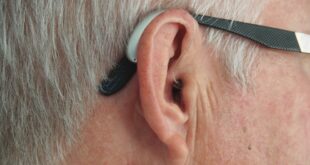This article represents the views of its writer, and GrownUps does not endorse the content of this article or any product or service mentioned in it. Please seek advice from a professional in relation to your own circumstances.
 Laser surgery has helped an enormous number of people give up their glasses and contact lenses and enjoy clearer vision. Not everyone with a vision problem can be helped using laser technology, but there is a new technique available in Auckland and Wellington which may allow more people to enjoy the benefits.
Laser surgery has helped an enormous number of people give up their glasses and contact lenses and enjoy clearer vision. Not everyone with a vision problem can be helped using laser technology, but there is a new technique available in Auckland and Wellington which may allow more people to enjoy the benefits.
The technique, called SMILE (SMall Incision Lenticule Extraction), offers patients a less invasive and quicker alternative to LASIK, and with an expected reduced risk of dry eye issues after the surgery.
The surgery utilises a state-of-the-art femtosecond laser to create a lenticule within the cornea, which is removed through a keyhole incision – a process which takes just 25 seconds per eye, and removes the need for people to wear glasses or contact lenses again to assist their vision.
Dr Dean Corbett from Auckland Eye says the procedure may help eliminate fears or concerns that have held some Kiwis back from having their vision corrected in the past.
“Fear is a big part of why many people do not seek out this kind of surgery, especially fear around a corneal flap being created,” he says Dr Corbett, “SMILE is a flap-less, keyhole surgery, so that eliminates a real barrier for some people.”
The procedure is also expected to reduce uncomfortable dry eye discomfort that some patients face after having laser eye surgery, says fellow ophthalmologist Dr Justin Mora, although research is yet to be completed on the issue.
“Most people need to use moisturising eye drops for a few days, or even a few weeks after laser treatment, which isn’t a big deal, but is a hassle,” he explains. “However, because SMILE has less of an effect on the corneal nerves, there should also be less of that discomfort, especially for those pre-disposed to dry eye problems.”
Other advantages of the new technique include a quicker return to sports for active people after the surgery, and the ability to get better results for patients with higher prescriptions who may have been told LASIK wasn’t a suitable option for them.
“The most common trigger for people coming in to find out about laser vision correction is a pair of broken glasses,” he says. “When they start to add up the costs and look at that long-term, it makes sense to look at correcting their vision once and for all.”
SMILE is available for those with myopia (nearsightedness), and astigmatism, and will achieve a result of 20:20 or 6:6 vision for 95-98% of patients.










Join the Discussion
Type out your comment here:
You must be logged in to post a comment.